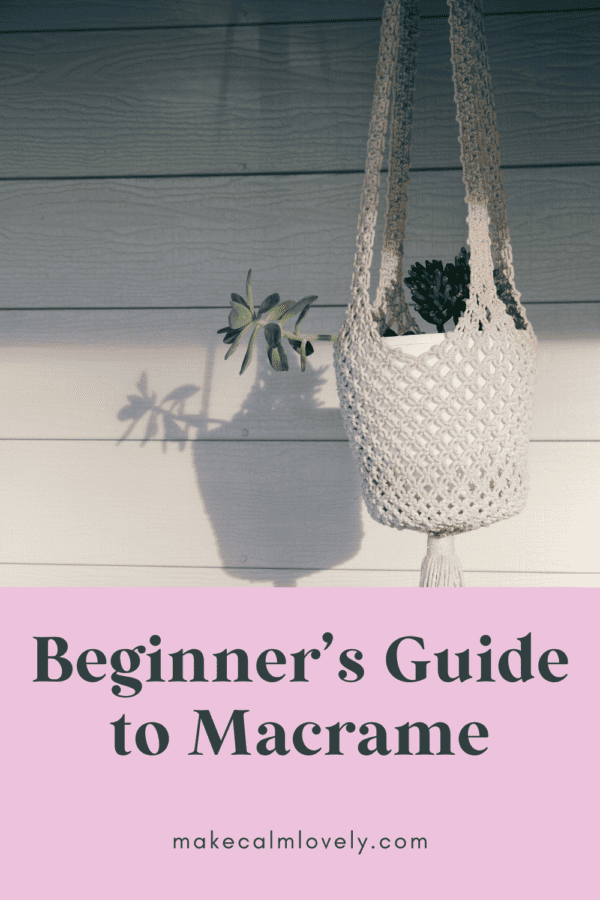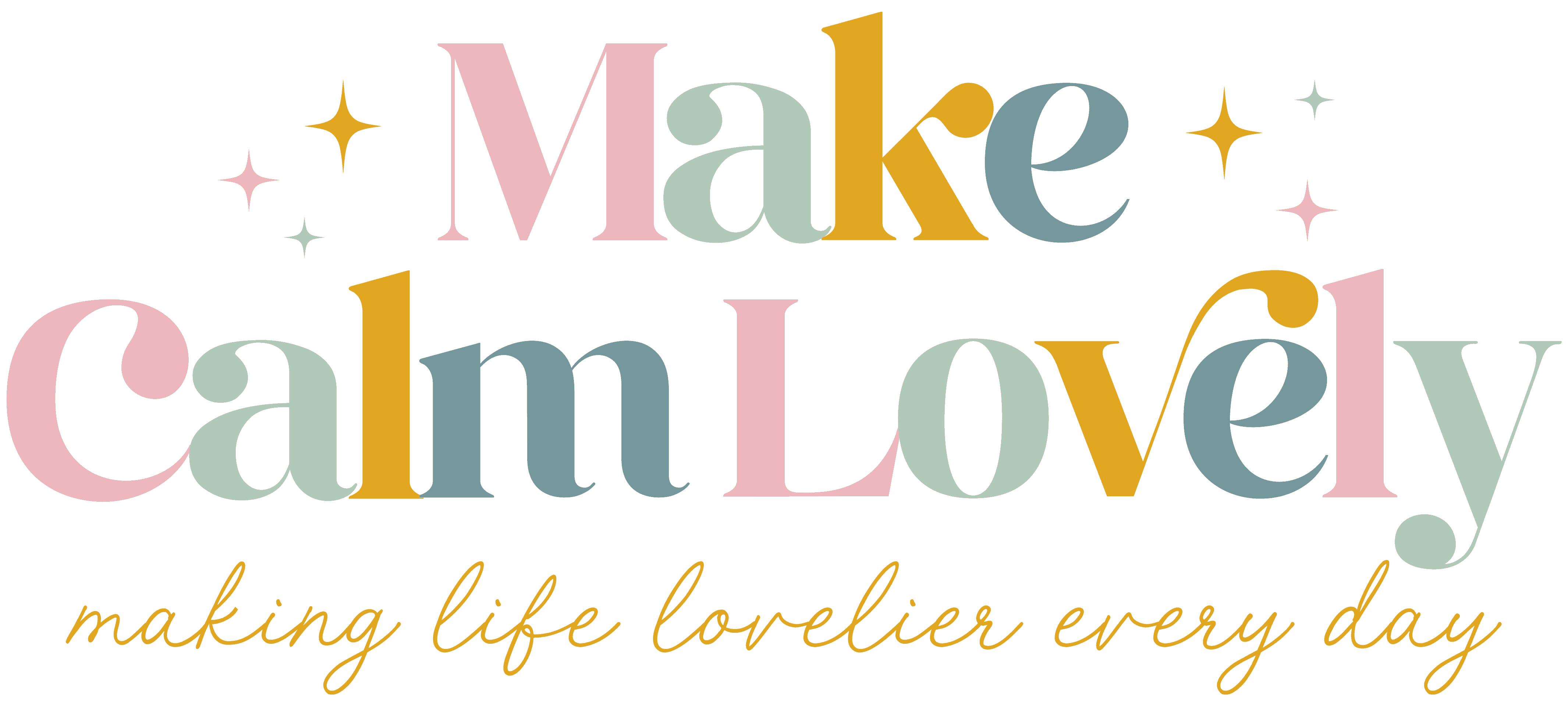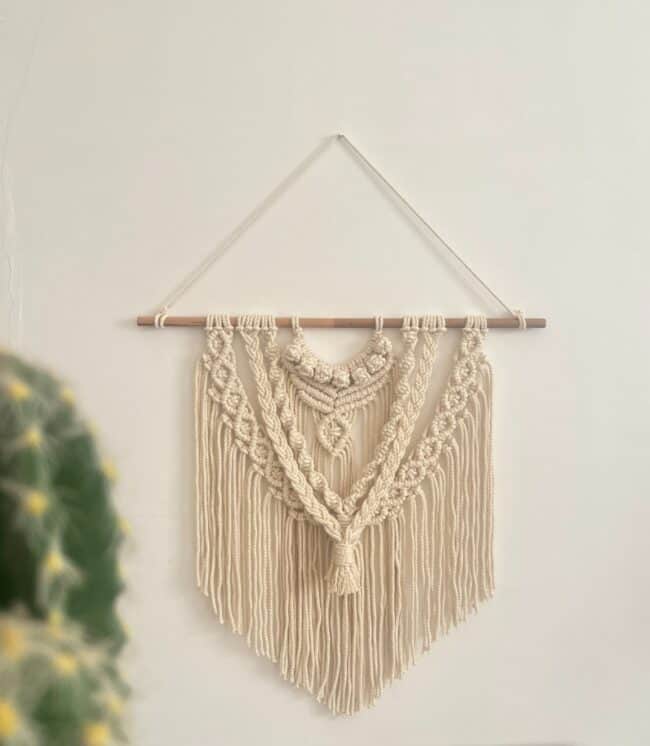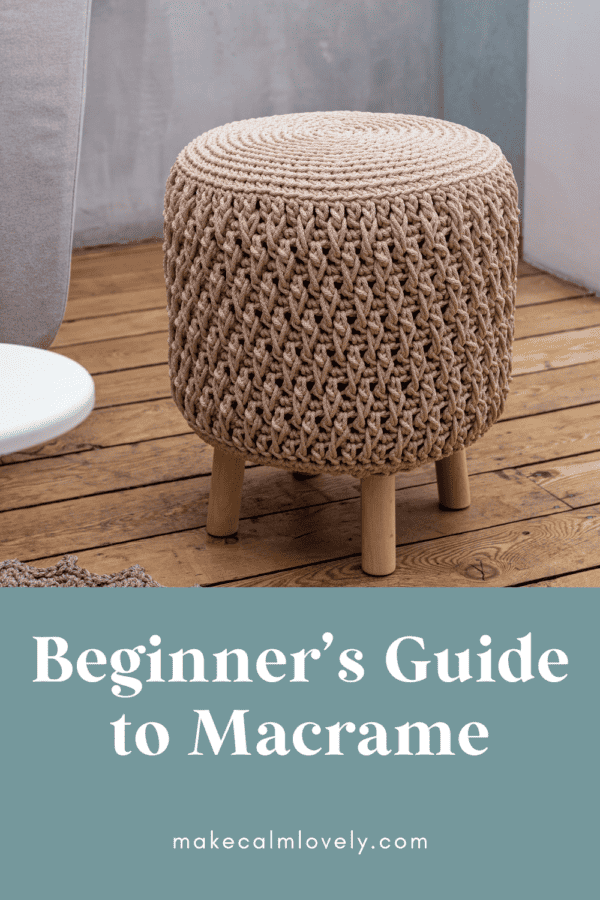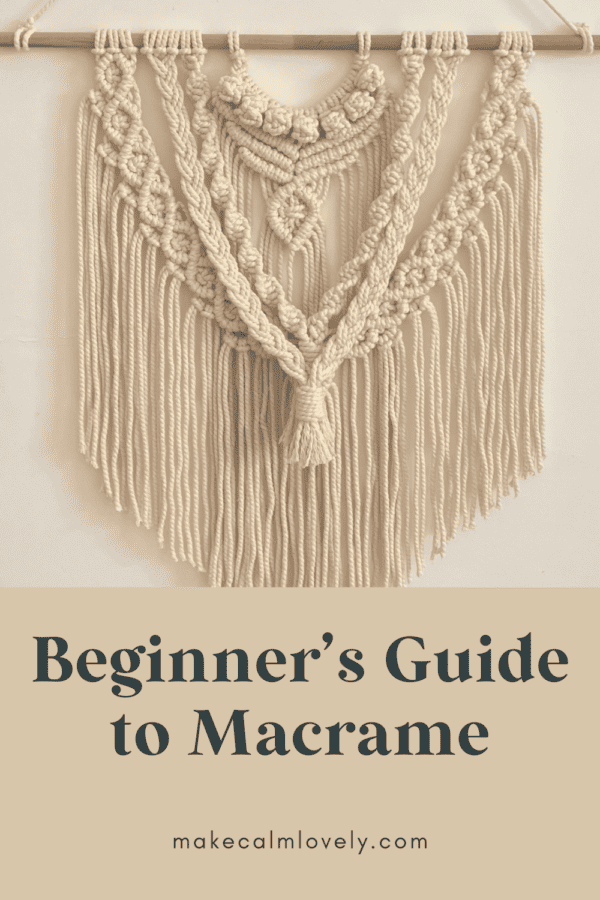Beginners Guide to Macrame
Macrame is a fabric crafting technique that uses knots to create decorative & functional items for you and your home. Learn all about macrame & how to start it here!
What is Macrame?
Macramé is a crafting technique that involves creating both decorative and functional items by knotting cords or strings together to form various patterns and designs.
This art form has been around for centuries and has been used for a wide range of purposes, including making jewelry, clothing, home decor items such as wall hangings and plant hangers, and more.
The key features of macramé include:
- Knotting: Macramé primarily involves the use of various types of knots to create intricate patterns. The most common knots used in macramé are the square knot, half-square knot, and the spiral knot, among others.
- Cords or Strings: Macramé projects are typically made using materials like cotton twine, hemp, jute, or nylon cords. These cords are usually soft and pliable, making them suitable for knotting.
- Versatility: Macramé can be used to create a wide range of items, from small, delicate jewelry to larger wall hangings and furniture pieces. Its versatility allows for creativity in design and purpose.
- Decorative: Many people appreciate macramé for its decorative and aesthetic appeal. It can add a touch of bohemian or rustic charm to interior spaces.
- Crafting Community: Macramé has a dedicated crafting community, and many people enjoy creating and sharing their macramé projects, patterns, and techniques with others.
Macramé gained popularity in the Western world during the 1970s as a part of the larger DIY and crafting movement.
Today, it has experienced a resurgence in popularity, with people using it to create unique and handmade items for their homes, as gifts, or for sale.
There are numerous tutorials, patterns, and resources available for those interested in learning macramé, making it an accessible and enjoyable craft for people of all skill levels.
How Easy is it to Learn Macrame?
The ease of learning macramé can vary depending on your prior crafting experience, your ability to follow instructions, and the complexity of the projects you want to undertake. Here are some factors to consider:
- Basic Knots: Macramé primarily relies on a few fundamental knots, such as the square knot, half-square knot, and the spiral knot. These knots are relatively easy to learn, and many beginners can grasp them quickly.
- Practice: Like any craft, macramé improves with practice. Initially, you may find it a bit challenging to get your knots even and consistent, but as you practice, your skills will improve.
- Project Complexity: The complexity of macramé projects can vary significantly. Starting with simple projects like keychains, bookmarks, or small wall hangings can be a great way to build your confidence and skills before tackling more intricate pieces like large wall hangings or plant hangers.
- Tutorials and Resources: There are numerous online tutorials, books, and videos available that provide step-by-step instructions for macramé projects. These resources can be incredibly helpful for beginners, as they often include clear visuals and explanations.
- Patience: Macramé requires patience, as it involves repetitive knotting and working with cords. Some projects can be time-consuming, so being patient and taking your time is essential.
- Creativity: Macramé also allows for creativity and customization. Once you’ve mastered the basic knots, you can experiment with different patterns, cord colors, and combinations to create unique designs.
- Community and Support: There is a thriving macramé community, both online and offline. Joining a macramé group or community can provide you with support, inspiration, and opportunities to learn from others.
In summary, macramé is a craft that many people find relatively easy to learn, especially when starting with simple projects and following tutorials.
However, like any skill, it may take time and practice to become proficient. If you are interested in learning macramé, don’t be discouraged by initial challenges, and enjoy the creative process of knotting cords to create beautiful and functional items.
Beginner Macrame Knots
If you’re new to macramé, it’s essential to start with some basic knots that form the foundation for more intricate designs. Here are three fundamental macramé knots that every beginner should learn:
- Square Knot (SK):
- The square knot is one of the most basic and widely used knots in macramé. It forms a flat, square-shaped pattern and is often used in various macramé projects.
- To tie a square knot:
- Take two cords, one on the left and one on the right.
- Cross the cord on the left over the cord on the right.
- Pass the left cord under the right cord.
- Bring the left cord up and through the loop created on the right side.
- Pull both cords tight to complete the knot.
- Repeat the same steps, reversing the process (cross the left cord over the right, pass it under, and bring it up through the loop) to create a square knot.
- Half-Square Knot (HSK):
- The half-square knot is similar to the square knot but involves only one cord, making it ideal for creating diagonal patterns and textures.
- To tie a half-square knot:
- Take a single cord.
- Cross it over the other cord.
- Pass it under the other cord.
- Bring it up and through the loop created on the right side.
- Pull the cord tight.
- Repeat the same steps, reversing the process (cross the cord over, pass it under, and bring it up through the loop) to create a half-square knot.
- Lark’s Head Knot (LHK):
- The lark’s head knot is a basic knot used to attach cords to a dowel, ring, or another anchor point at the beginning of many macramé projects.
- To tie a lark’s head knot:
- Fold a cord in half to create a loop.
- Place the loop behind the dowel or anchor point.
- Pass the loose ends of the cord through the loop.
- Pull the loose ends down to secure the knot.
The three knots mentioned above are the building blocks for many macramé patterns and designs.
Once you have mastered these basic knots, you can experiment with combinations and variations to create more complex and decorative patterns in your macramé projects.
Remember that practice is key to improving your knotting skills, so don’t be discouraged if it takes a bit of time to get them just right.
What Supplies do you Need for Macrame?
To get started with macramé, you’ll need a few essential supplies. Here is a list of the basic items you’ll need for macramé projects:
- Macramé Cord or Rope: This is the primary material used in macramé. It comes in various materials, including cotton, hemp, jute, nylon, and more. The choice of cord depends on your project and personal preference.
- Scissors: Sharp scissors are essential for cutting cord and trimming the ends neatly.
- Dowel or Ring (Optional): Depending on your project, you may need a wooden dowel, metal ring, or other anchor point to attach your cords to. This is especially useful for wall hangings and plant hangers.
- Measuring Tape or Ruler: You’ll need a measuring tool to ensure that your macramé project is the desired length and evenly spaced.
- Masking Tape or Painter’s Tape (Optional): You can use tape to secure the ends of your cords while working on your project to prevent fraying.
- Comb or Brush (Optional): For some projects, you may want to comb or brush the cords to create a smoother texture or fringed ends.
- Beads (Optional): Beads can be incorporated into your macramé design for decorative purposes. Make sure the bead holes are large enough to accommodate your cord.
- S-hooks or Carabiners (Optional): These can be helpful for hanging your work in progress or attaching it to a secure point while working on it.
- Design Pattern or Instructions: If you’re following a specific macramé pattern or project, make sure you have the instructions or pattern handy.
- Workspace: Find a comfortable and well-lit workspace with enough room to work on your macramé project. A flat surface or a table is usually suitable.
The specific supplies you need will vary depending on the complexity and type of macramé project you are working on.
For beginners, it’s a good idea to start with a simple project and gradually build up your collection of macramé supplies as you gain more experience and confidence in the craft.
Macramé is a versatile and enjoyable hobby, and you can create a wide range of beautiful and functional items with just a few basic supplies.
